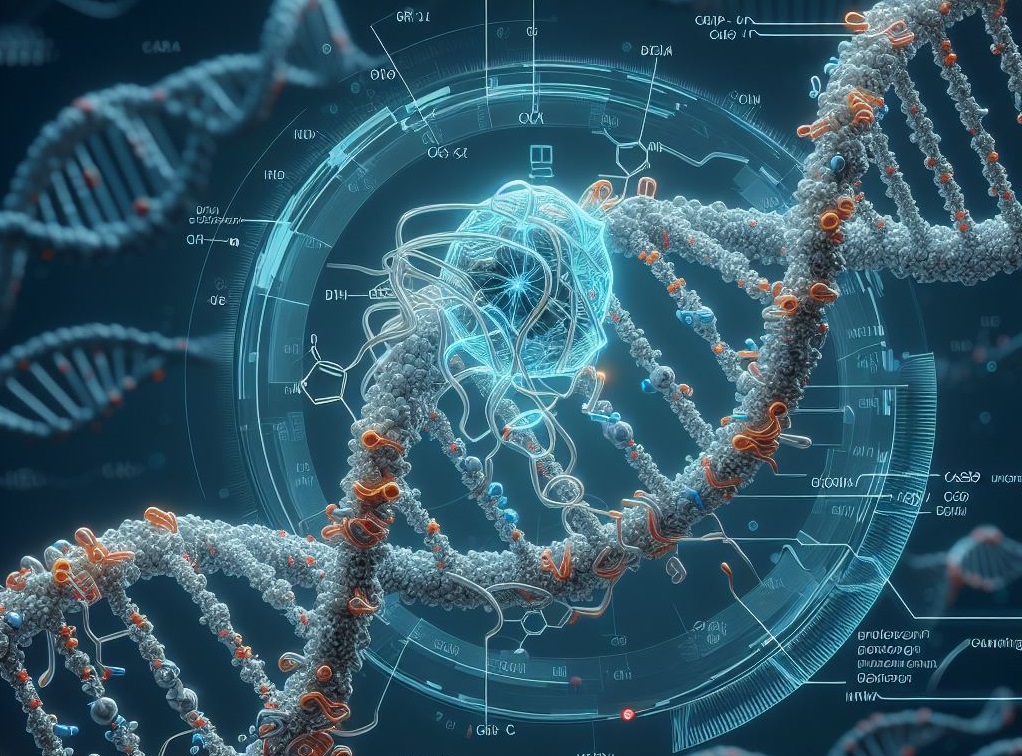There are approximately 3 billion base pairs in the human genome, and 99.6% of people have the same genetic composition. All individual differences are explained by that meagre 0.4%. Important hints regarding the aetiology of several complicated health conditions, such as heart disease and neurological illnesses like schizophrenia, can be found in certain combinations of mutations in those base pairs.
The techniques used now to simulate or fix mutations in living cells are ineffective, particularly when multiplexing the process of introducing many point mutations across the genome simultaneously. Multiplexed orthogonal base editors, or MOBEs, are novel, effective genome editing instruments created by researchers at the University of California, San Diego that allow for the simultaneous installation of numerous point mutations. They worked in the lab of Alexis Komor, an assistant professor of chemistry and biochemistry.
A detailed study is published in the journal Nature Biotechnology.
Comparing genomes that vary by only one DNA letter piqued Komor’s team’s particular attention. These are known as bases: C stands for cytosine, T for thymine, G for guanine, and A for adenosine. Someone can have a T base when someone else has a C base. A person may have 4-5 million of these single nucleotide variants, often known as single point mutations or single nucleotide variations. Certain variations are dangerous, while others are benign. Frequently, illness is caused by a confluence of variants.
The vast array of potential variants in the genome presents a challenge when modelling diseases using it. Scientists could decode the genomes of a cohort of people who were all affected by heart disease if they were trying to identify the specific genetic mutations causing the condition, but it is extremely difficult to pinpoint the precise combination of variations that causes the disease because there are so many variations in any two individuals.
There is a problem interpreting genetic variants. In fact, most variants that are identified are unclassified clinically, so we don’t even know if they’re pathogenic or benign,
Our goal was to make a tool that can be used in disease modeling by installing multiple variants in a controlled laboratory setting where they can be studied further.
Quinn T. Cowan, Ph.D.
We must comprehend the constraints of the conventional CRISPR-Cas9 gene-editing technique to comprehend the motivation for the creation of MOBEs. Using a guide RNA, CRISPR-Cas9 may precisely target a specific genomic region, much like a GPS signal. The DNA-binding enzyme Cas9 is responsible for severing the DNA strands completely.
Double-strand breaks are generally simple, yet they can be harmful to cells. Indels, or random insertions and deletions, are another result of this type of gene editing that occurs when a cell is unable to fully repair itself. The hazards of using CRISPR-Cas9 to edit numerous genes are multiplied.
Komor’s lab uses a base-editing method she invented in place of CRISPR, which modifies DNA chemically. However, only one kind of edit such as C to T or A to G can be done at a time. Therefore, base editing replaces and erases letters one at a time instead of using scissors to take away a whole chunk at once. It is less damaging to cells and slower, but more effective.
More accurate modelling of polygenic diseases resulting from many genetic variants is possible when two or more base editors are used simultaneously, converting an A to G at one place in the genome and a C to T at another. But there wasn’t a method for doing this effectively without guide RNA “crosstalk,” which occurs when base editors make unintentional modifications.
Cowan’s MOBEs attract base-modifying enzymes to specific genomic regions using RNA structures called aptamers, which are short RNA loops that bind to certain proteins. This allows for the efficient simultaneous editing of many sites with a reduced likelihood of crosstalk.
Cowan’s MOBEs attract base-modifying enzymes to specific genomic regions using RNA structures called aptamers, which are short RNA loops that bind to certain proteins. This allows for the efficient simultaneous editing of many sites with a reduced likelihood of crosstalk.
Using aptamers to recruit ABEs (adenosine base editors) and CBEs (cytosine base editors) in an orthogonal pattern to create MOBEs is a unique approach that has never been done before.
The disparities are striking: crosstalk can happen as much as 30% of the time when CBE and ABE are administered together without the use of MOBE. MOBE achieves 30% conversion efficiency of the necessary base modifications with less than 5% crosstalk.
The research served as a proof of concept to assess the viability of the MOBE system, for which a provisional patent has been issued. The researchers used several case studies involving actual illnesses, such as the uncommon hormonal condition Kallmann syndrome, to test them even further. According to their research, MOBE systems have the potential to effectively modify important cell lines associated with certain polygenic illnesses.
Also Read| Natural vanillin extracted from plants rapidly using a Bioengineered enzyme
We’re in the process of putting the plasmids up on AddGene so anyone can freely access them. Our hope is that other researchers will use the MOBEs to model genetic diseases, learn how they manifest and then hopefully create effective therapies.
Quinn T. Cowan, Ph.D.
Source: UC San Diego Today
Journal Reference: Cowan, Quinn T., et al. “Development of Multiplexed Orthogonal Base Editor (MOBE) Systems.” Nature Biotechnology, 2024, pp. 1-15, https://doi.org/10.1038/s41587-024-02240-0.
Last Modified:




